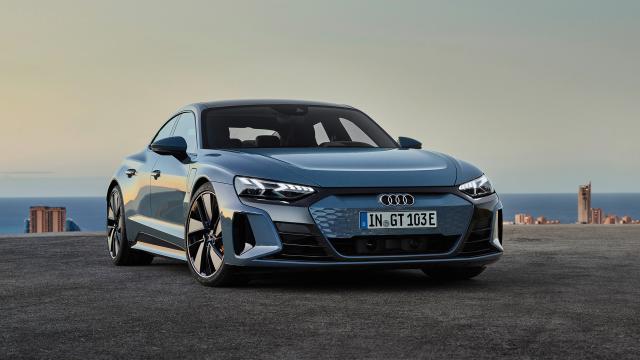Audi first showed off the E-Tron GT as a concept three years ago, and today the all-electric grand tourer is finally making its formal production debut. If it looks familiar, that’s by design.
The E-Tron GT Quattro and its more performance-oriented sibling, the RS E-Tron GT, look nearly unchanged from Audi’s earliest prototype. That’s always encouraging to see, even if the first look already gave off an impression of production readiness. Under the skin, the E-Tron GT shares much in common with the Porsche Taycan, though Audi says that while the Taycan is more focused on lap times — an impression I never got, but whatever — the E-Tron GT is about everyday usability.
The dual motors in the E-Tron GT produce 349 kw and 629 Nm, while the RS E-Tron gets 440 kW and 829 Nm. With launch control activated, those power figures rise to 389 and 474 kW respectively, and both cars can deliver that boost for a maximum of 2.5 seconds. The motors are powered by an 85 kWh battery pack, that Audi predicts will provide up to 480 kilometres of range based on WLTP cycle estimates.
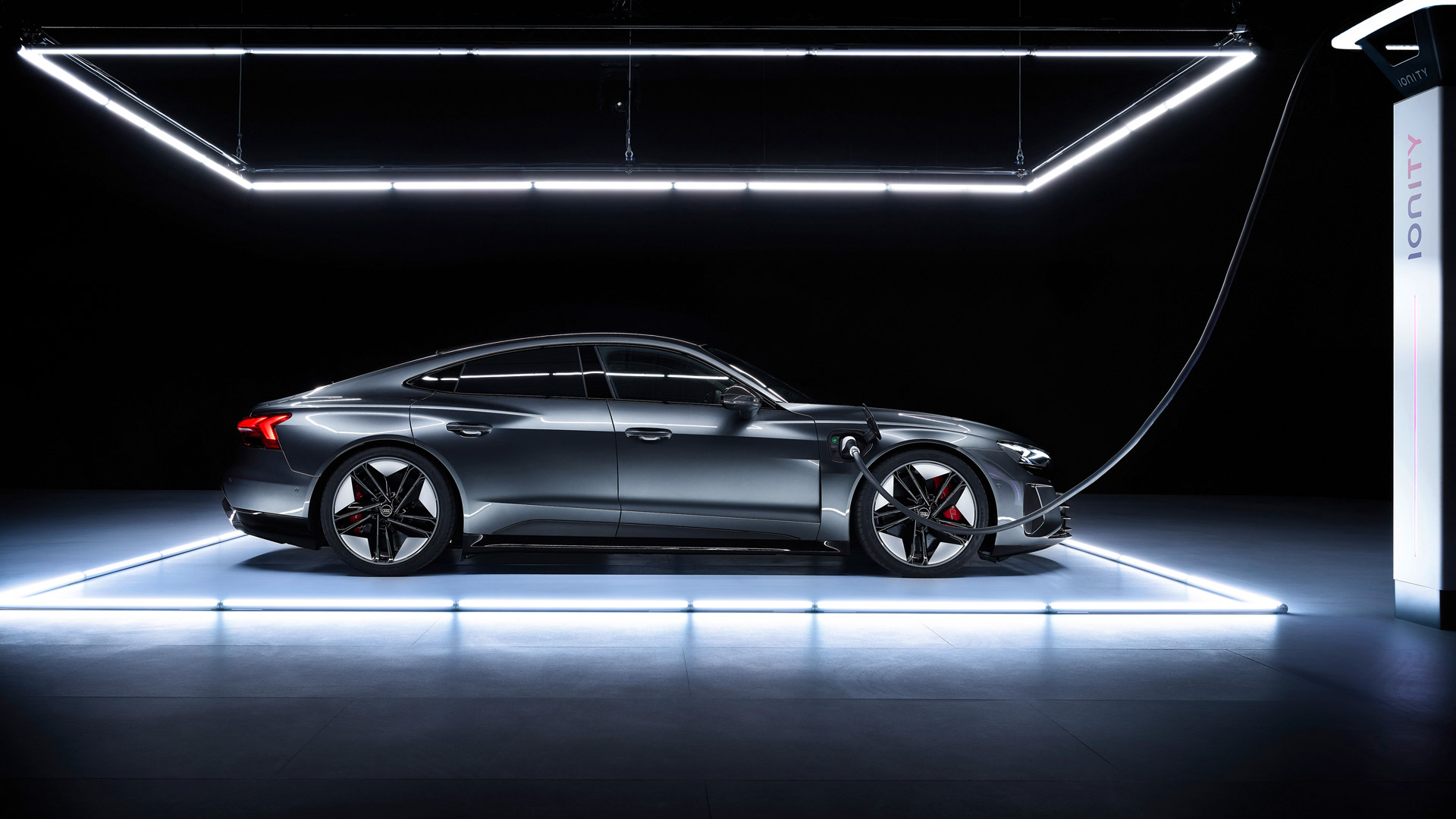
Like the Taycan, the E-Tron GT supports DC fast charging at up to 270 kW. In Audi’s case, that allows the car to replenish roughly 97 km of driving in five minutes. EVs typically can’t maintain peak charging rate through the entirety of the charging process due to thermal constraints, so Audi has developed a system in tandem with the car’s navigation where it’ll precondition the battery to be at the optimal temperature (about 30 degrees Celsius, we’re told) to be prepared for the fastest possible charging as soon as it arrives at the terminal.
Both E-Tron GT models come with all-wheel drive (even though only the non-RS model is christened Quattro, for some reason), and Audi cites 0-100 km/h times of 4.1 seconds for the standard one, and 3.3 seconds for the RS. The Taycan’s clever two-speed automatic transmission is here as well, which supposedly optimises low-speed acceleration and efficiency.
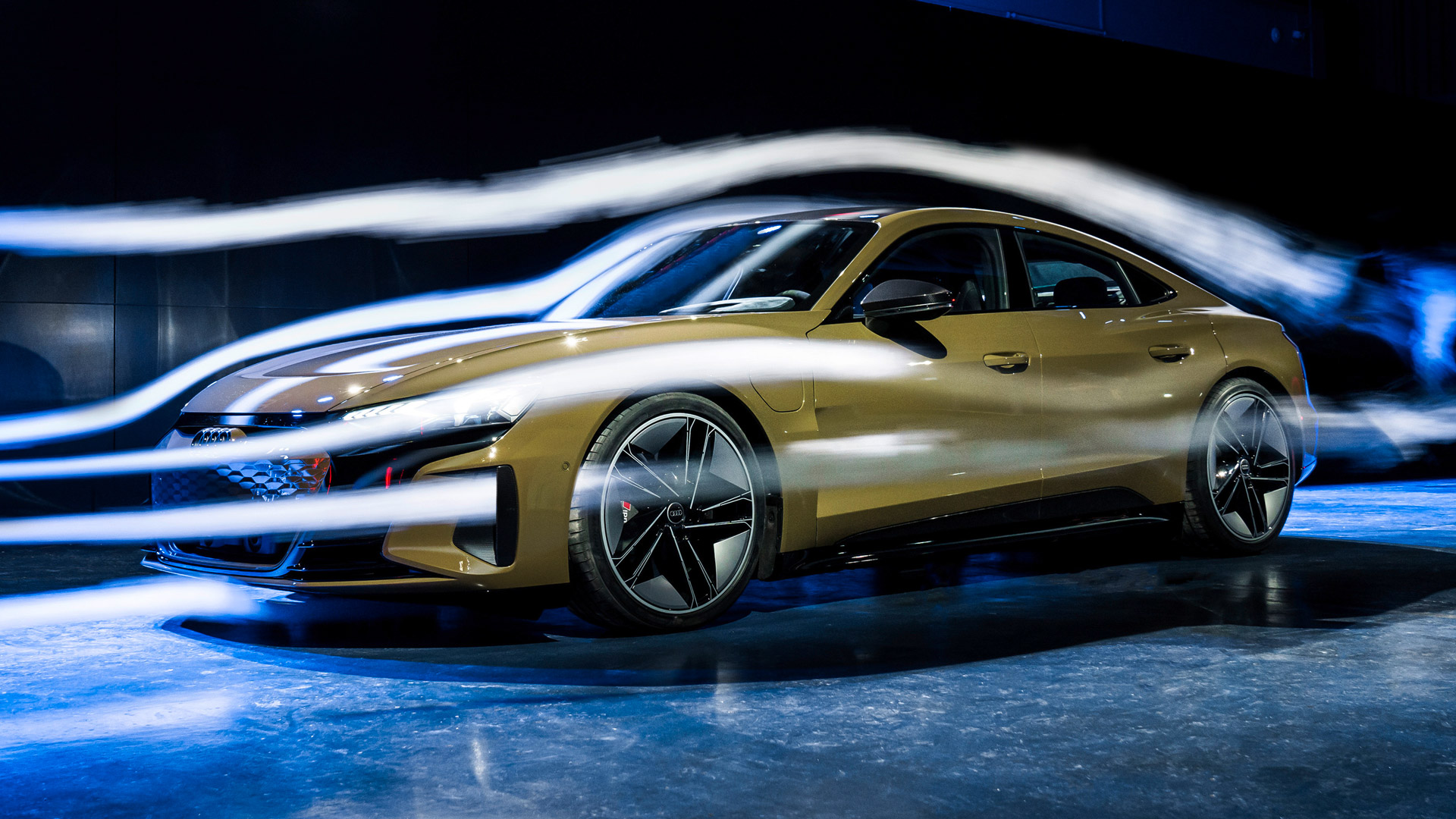
With a drag coefficient of 0.24, the E-Tron GT isn’t quite as slippery as the 0.22 Taycan. However, you’ll notice many of the same air-channeling tricks here as in that car, with its vertical side air curtains that funnel air around the front tires, rather than into them.
In terms of handling and suspension, controlled dampers and a rear-axle differential lock are standard, though the RS E-Tron gets a “controlled” lock with a multi-plate clutch that allows for fully variable operation. Customers can option adaptive, three-chamber air suspension that also comes standard in the RS model. Both E-Tron GTs offer all-wheel steering and carbon-ceramic brake discs as options, but tungsten carbide-coated discs are included by default in the RS.
Audi is making a lot of noise about the E-Tron GT’s low centre of gravity, and that it’s lower than an R8’s — though with all those batteries in the tub, that’s kind of expected.
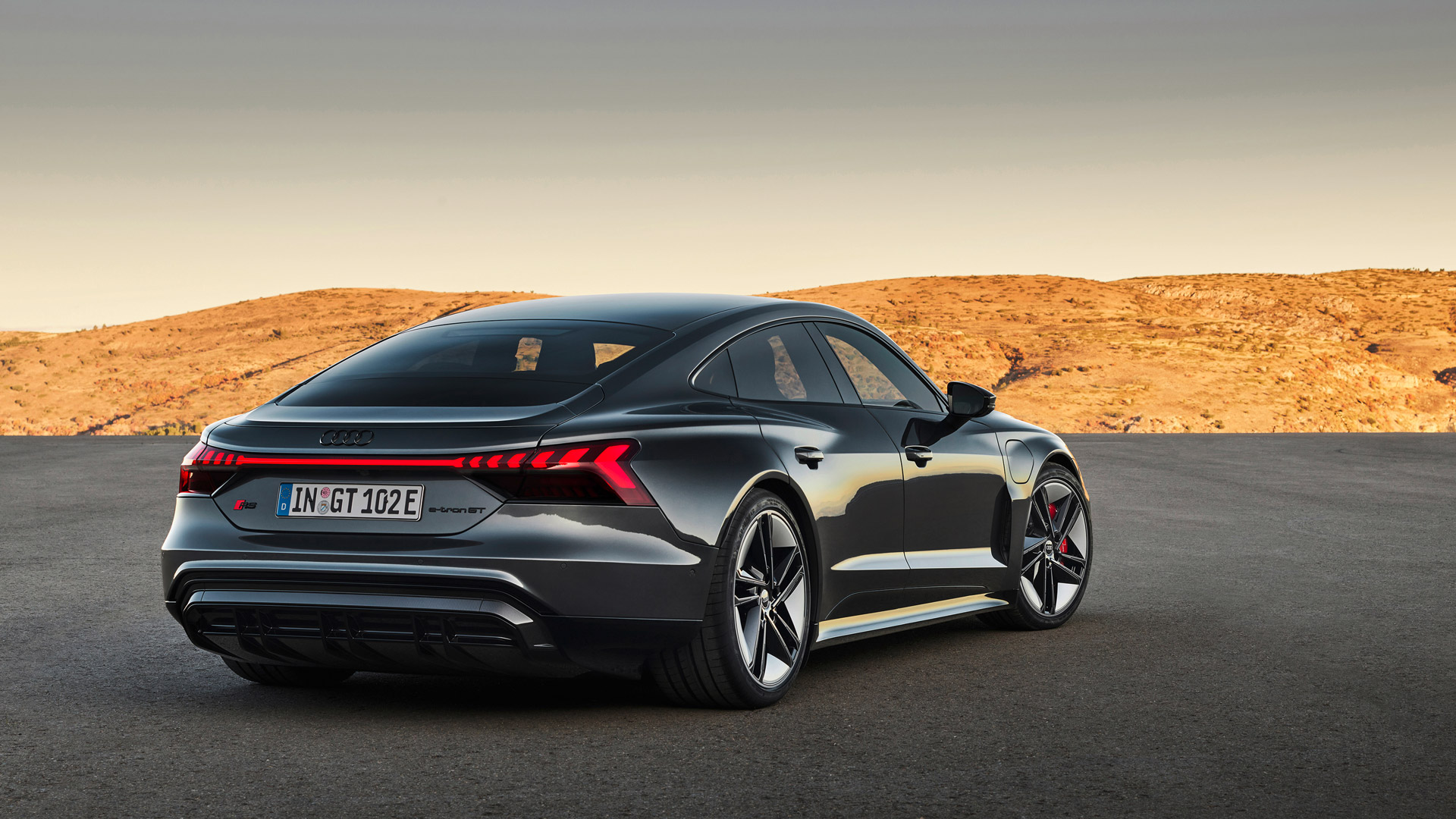
Bearing that in mind, the E-Tron GT looks suitably low and wide, and the Taycan influence is only obvious to me in the curvaceous roofline. It’s clean and stylish overall, and while the front borders on overdesign, I do like how the stylists repurposed the Audi grille shape to enclose a body-colour portion of the bumper. Grilles obviously aren’t necessary on electric vehicles, so the faster we can drop that unnecessary motif, the better.
I think the rear-quarter view is where the E-Tron particularly shines. From this angle, the vehicle looks unlike any other car in Ingolstadt’s lineup. The downward sweep of the taillights are something I can’t recall on any Audi, nor would I have expected the general reluctance toward sharp edges throughout the back. The result is vaguely reminiscent of the A7’s rear end but less rigid, and I think it’s appropriate for a sporty, halo EV like the E-Tron GT.
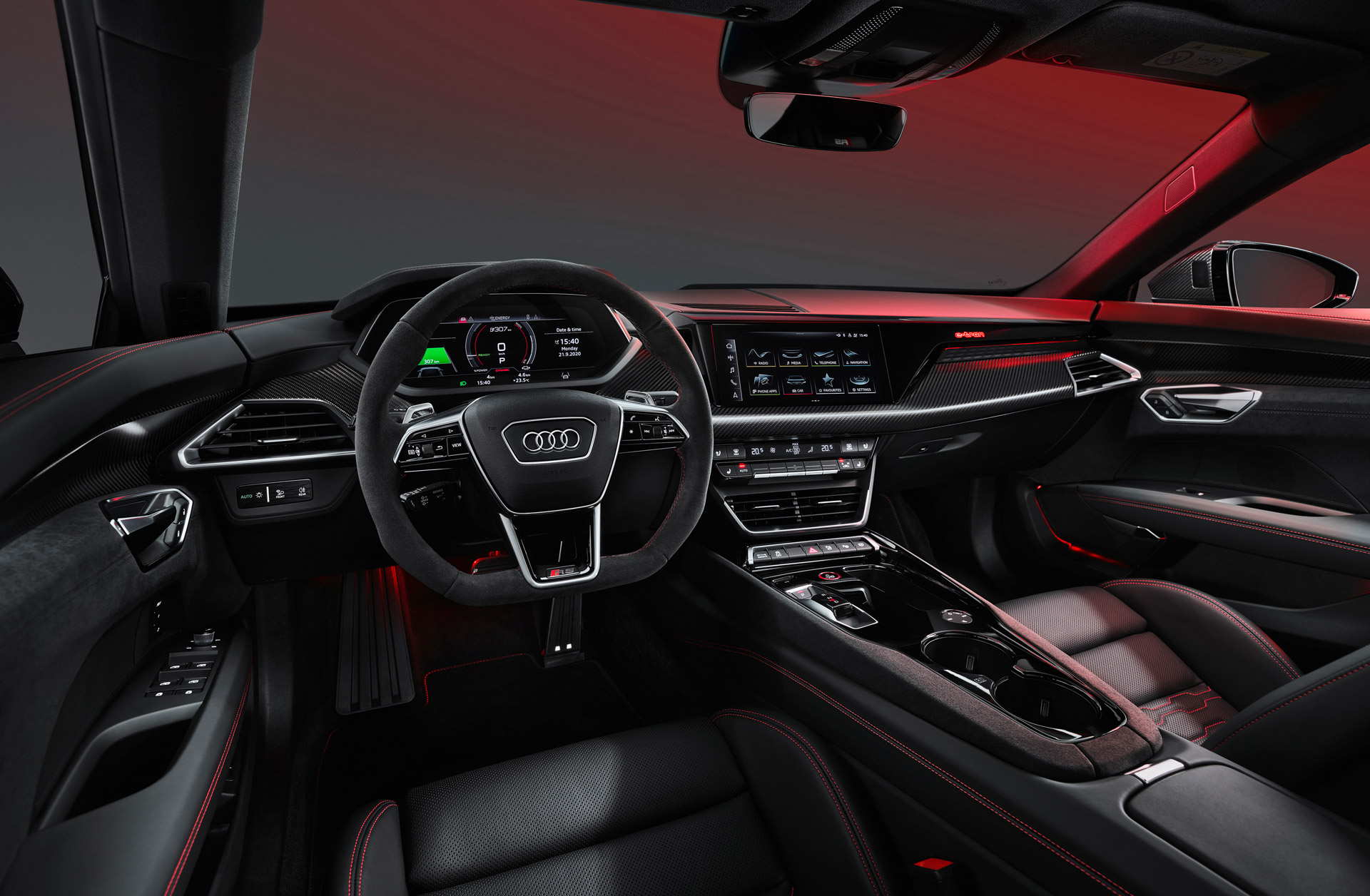
I can’t find much to say about the E-Tron GT’s interior, which looks fine enough and bears a surprising number of physical buttons and an infotainment display that isn’t really that large by modern standards. Granted, real buttons are very useful and nice, and I’m not complaining about this. Audi says no actual leather has been used in the interior, and the upholstery options — the company showed off something that looked similar to leather, as well as another material with a wool texture to it — are reportedly made with “a high percentage of recycled material,” including used water bottles.
Audi appears to be quite pleased with the E-Tron GT’s sound suite. Called e-Sound, the company experimented with a number of sources and instruments, from pipes, electric drills and drones to musical instruments like guitars and didgeridoos, to produce a synthetic noise that will both satisfy legal requirements and sound appropriate for the vehicle. The result mixes a low rumble with a tone I can only describe as more befitting of a spaceship, and while I can’t imagine most people are really all that concerned with the fake sound their electric car makes, it is somewhat interesting to observe how different manufacturers have approached the problem, and the noises they’ve invented along the way.
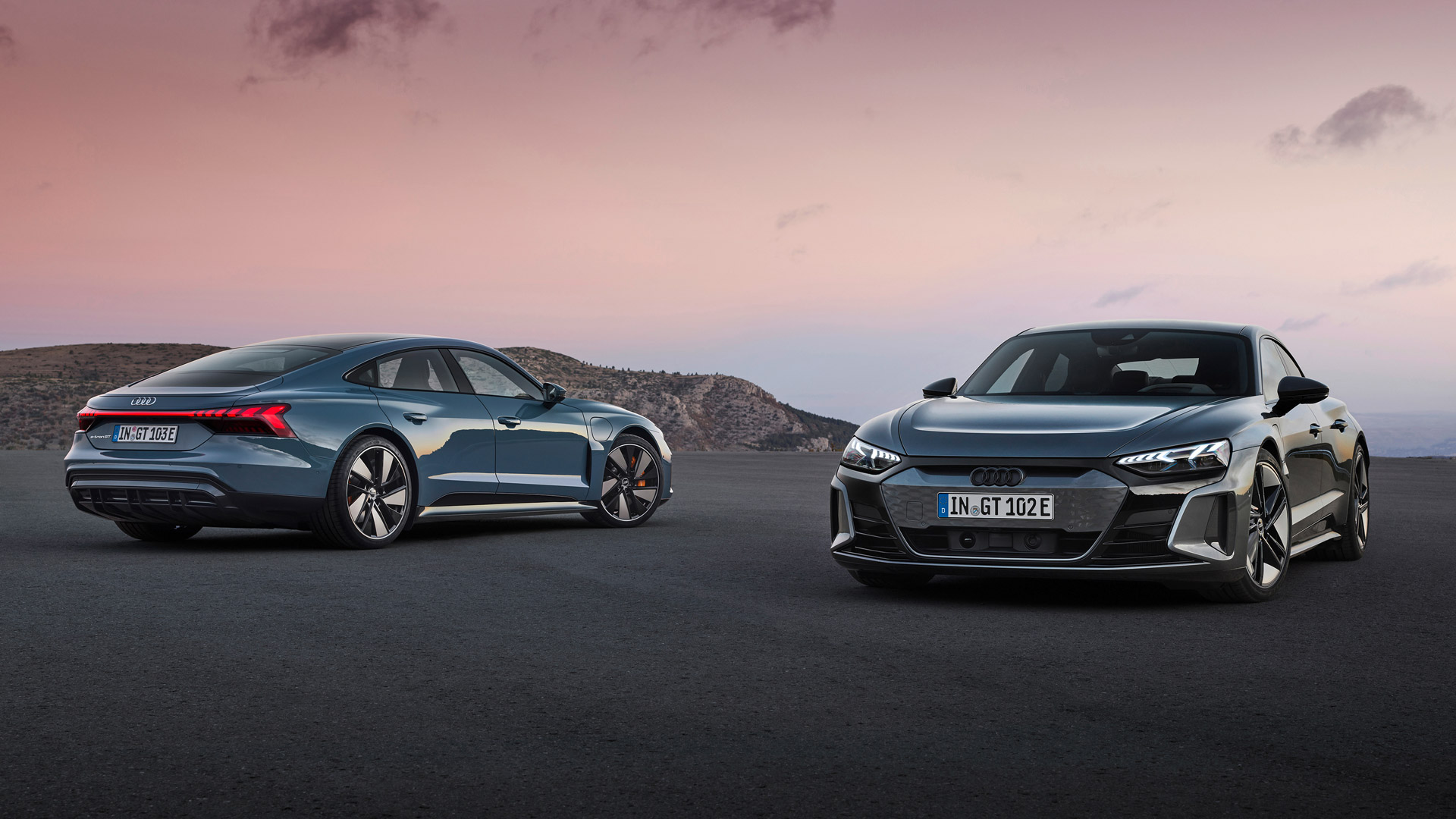
The E-Tron GT will start at 99,800 euros ($US120,343 ($155,772)) in Germany, while the RS E-Tron will start at 132,800 Euros ($207,279). For reference, the base rear-wheel-drive Taycan begins at 83,500 euros ($130,233) in Germany, though the Taycan 4S, which is a better counterpart to the E-Tron GT in terms of performance, begins at 106,487 euros ($166,086). It would seem that Audi is positioning the E-Tron GT slightly below the price bracket occupied by the Taycan, and if a non-Quattro model with perhaps a shorter range eventually emerges, it could undercut the cheapest Porsche EV.
